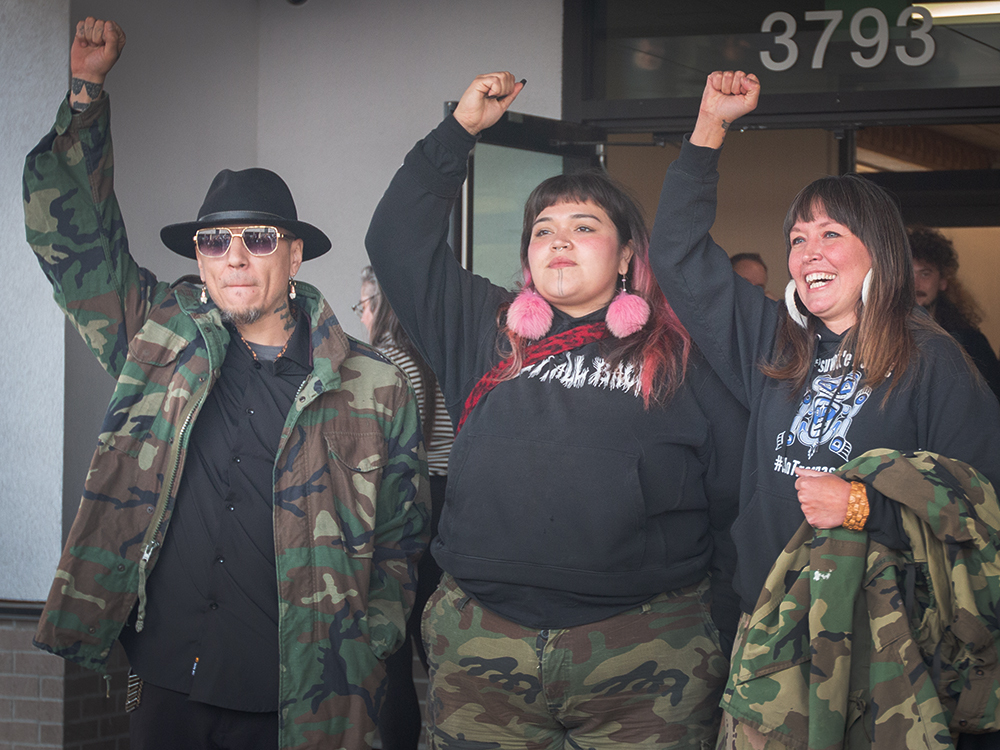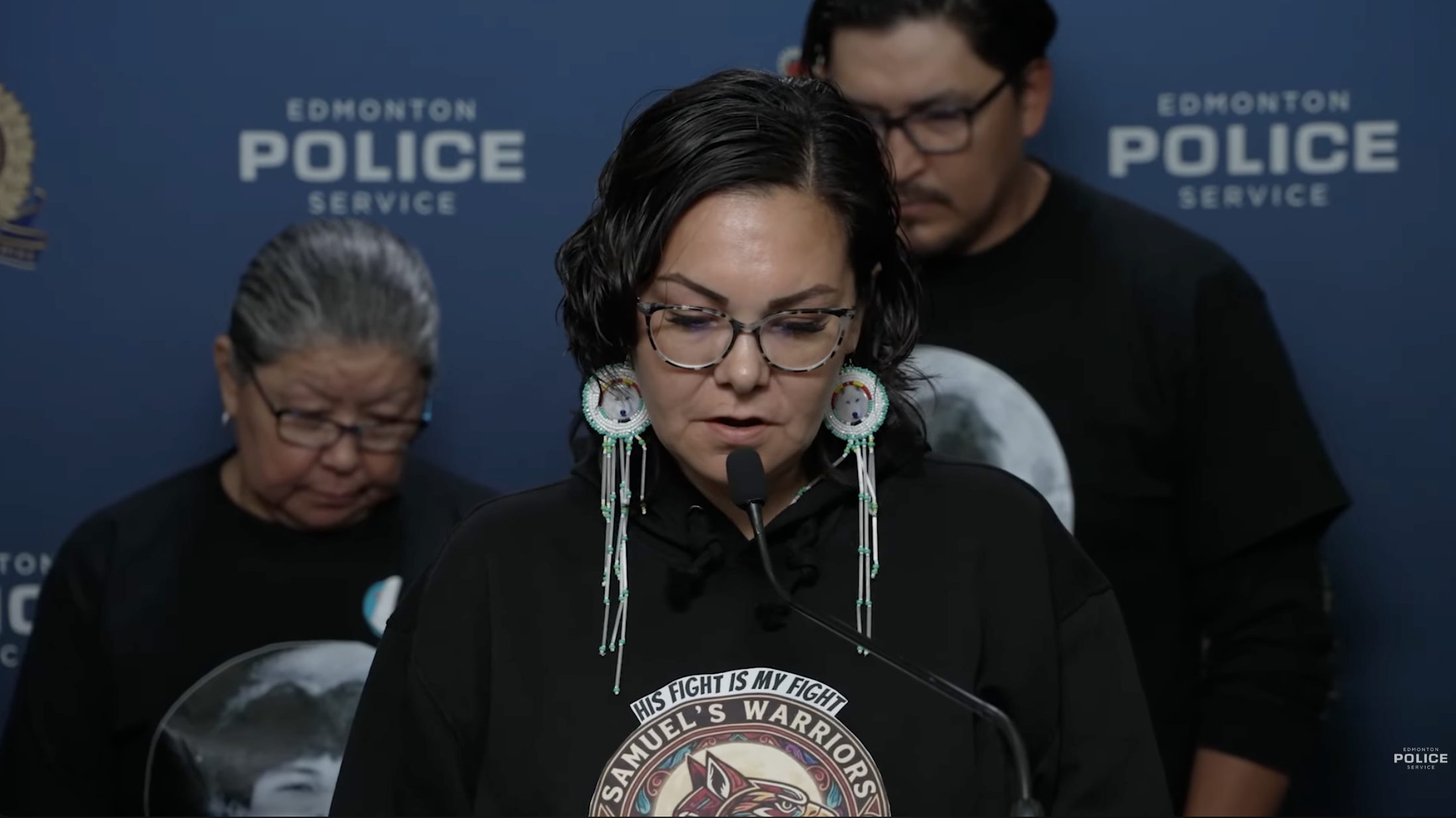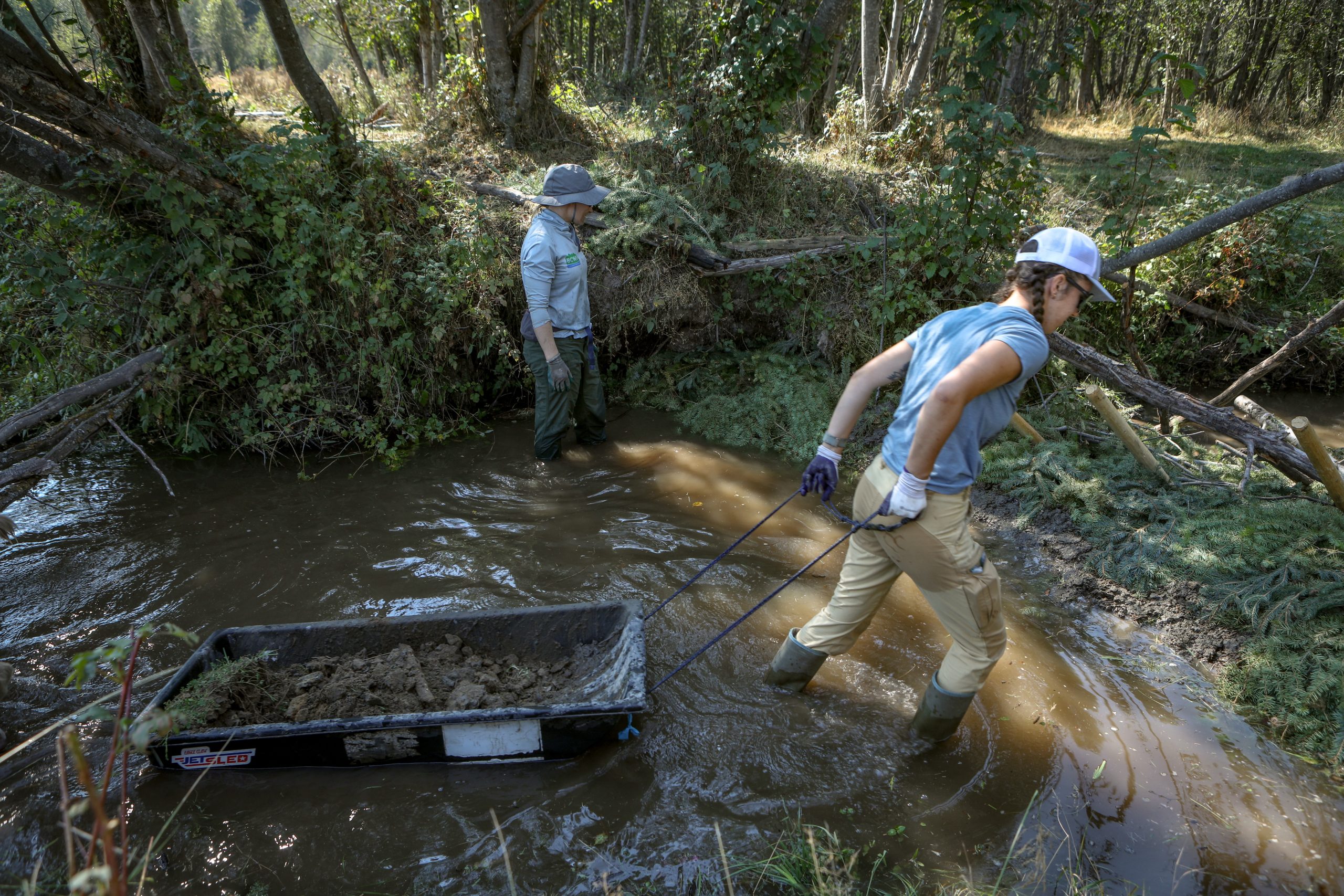St’uxwtéws brings authentic cultural lens to historic ranch site after taking over management
A Bonaparte First Nation non-profit society is now operating the Hat Creek Ranch and nearby fossil beds in Secwepemcúl’ecw


Misty Antoine’s family has long been connected to the Hat Creek Ranch near “Cache Creek” in Secwepemcúl’ecw.
Her grandfather used to work there, she said, and her family’s history can be traced back from that area.
Now, Antoine is the one running operations at the ranch and its nearby fossil beds, after her home community of St’uxwtéws (Bonaparte First Nation) was involved in a deal to take over its management.
“It’s bringing back a lot of our connection to our people,” she said in an interview.
“[There’s] a huge connection with Bonaparte, many of the families, specifically my family — the Antoine family — we actually originate from the Hat Creek Ranch area.”
The Hat Creek Ranch is a heritage site located on unceded Secwepemcúl’ecw but owned by the province as a heritage property. It’s also classified federally as a national historic site.
Its location on the Cariboo Wagon Roads are part of the Gold Rush Trail, and buildings on site date as far back as 1860 when gold rush travellers would stay overnight and visit the site’s roadhouse.
Transferring operations to St’uxwtéws Pesuten Heritage Society has been an ongoing process, and officially occurred on April 1. Since then, the First Nation’s non-profit has been operating the site under Antoine’s leadership.
A board of directors guided the Friends of Historic Hat Creek Ranch Society, which previously operated the site. The board with St’uxwtéws Pesuten Heritage Society, consisting of six Indigenous seats and three at-large seats, now has deciding power over the ranch and McAbee Fossil Beds.
“It’s bringing everybody together and helping one another out, and actually providing people with authentic cultural feedback,” Antoine said.
“We’ve been striving just to keep moving forward.”
At an event marking the site’s opening under new management on May 1, there were multiple St’uxwtéws families who had relatives that previously lived and worked at the ranch, which Antoine says is bringing them back to their roots.

Members of the nation are employed at the ranch full time with multiple summer positions coming up, giving Youth an opportunity to work at the heritage site where they can learn the history and culture on the land.
The Indigenous interpretation site at Hat Creek was first constructed in 1995, and contains displays of traditional homes including lean-tos, teepees, and a pithouse depicting where families would live throughout the colder months.
Other displays consist of fishing weirs and drying racks to show the process of food gathering and preparation.
Antoine said immediate changes include the movement of the Indigenous site closer to the main ranch, which offers closer more accessible tours and adding trails to the eight kilometre trail network of beginner and intermediate paths near the fossil beds.
Located on around 130 hectares of land, the ranch exhibits the lives led by miners, travellers and the Secwépemc people throughout the gold rush era.
Interpreters are on site for tours of the Indigenous displays or visitors can conduct self guided tours with signs explaining sites around the ranch. On the Indigenous site there are signs featuring the Secwépemc language, and Antoine noted they are working on more for the future.
Operations for Antoine also include ensuring the site is safe for all visitors which includes upkeep of the pithouses to ensure a sturdy structure.
The first pithouse was built in 1995 when the Indigenous interpretation site was opening with another one built years later. While travellers used to stay overnight in the pithouse Antoine says it needs construction work before getting back to its original state.
“It’s able to show you just can’t stay in it, like we used to before,” she said.
The site, which includes a restaurant and gift shop, offers tours and activities available throughout the day. Visitors can also stay overnight as there are RV spaces, camping spots, cabins and even a covered wagon.
They also implement traditions into the site by featuring drumming and running activities such as flintknapping and arrowhead hunting.
Located 25 kilometres from Hat Creek Ranch site is the McAbee Fossil Beds, another area containing history for the people through the preservation of fossils showcasing plants, animals, and insects. Beside the beds lies Juniper Beach, which Antoine adds is another traditional area for the nation.
As the operators, the heritage society has the opportunity to hold Indigenous events such as the 2 Rivers Remix movable feast, a festival that takes place throughout the province in Indigenous communities. This year marks the first time the festival took place at Hat Creek Ranch on June 22.
This will also be the second year the Bonaparte powwow will be held on the site. Antoine notes she would like to have more events to bring families together on the land.
“We’re bringing everything back to us, like our culture, our land and our people and the connection,” she said.
For the future, Antoine sees collaboration within the community, locals and a wider audience. She has heard of many locals who have never been to the ranch or fossil beds and wants to create an inviting atmosphere where everyone can explore and embrace the history.
To support Indigenous artists, the gift shop on site contains creations of many mediums for consignment. Antoine noted they want to build up the local artists and showcase their artwork and crafts to provide a space where locals and travellers alike can gather and embrace the art from the locals.
“You bring more local [goods] in, you’ll have more local people come,” she says.
B.C. Minister of Tourism, Arts, Culture and Sport Lana Popham said in a statement back in March that the St’uxwtews Pesuten Heritage Society was selected to operate the ranch and fossil beds because of the strong historic connections to both sites.
“I look forward to Bonaparte First Nation and its society showcasing the important Indigenous history of these sites,” she said.
“This work is vital in fostering greater understanding, appreciation and respect for B.C.’s diverse and unique history.”
Author
Latest Stories
-
‘Bring her home’: How Buffalo Woman was identified as Ashlee Shingoose
The Anishininew mother as been missing since 2022 — now, her family is one step closer to bringing her home as the Province of Manitoba vows to search for her
-
Land defenders who opposed CGL pipeline avoid jail time as judge acknowledges ‘legacy of colonization’
B.C. Supreme Court sentencing closes a chapter in years-long conflict in Wet’suwet’en territories that led to arrests
-
Samuel Bird’s remains found outside ‘Edmonton,’ man charged with murder
Officers say Bryan Farrell, 38, has been charged with second-degree murder and interfering with a body in relation to the teen’s death













